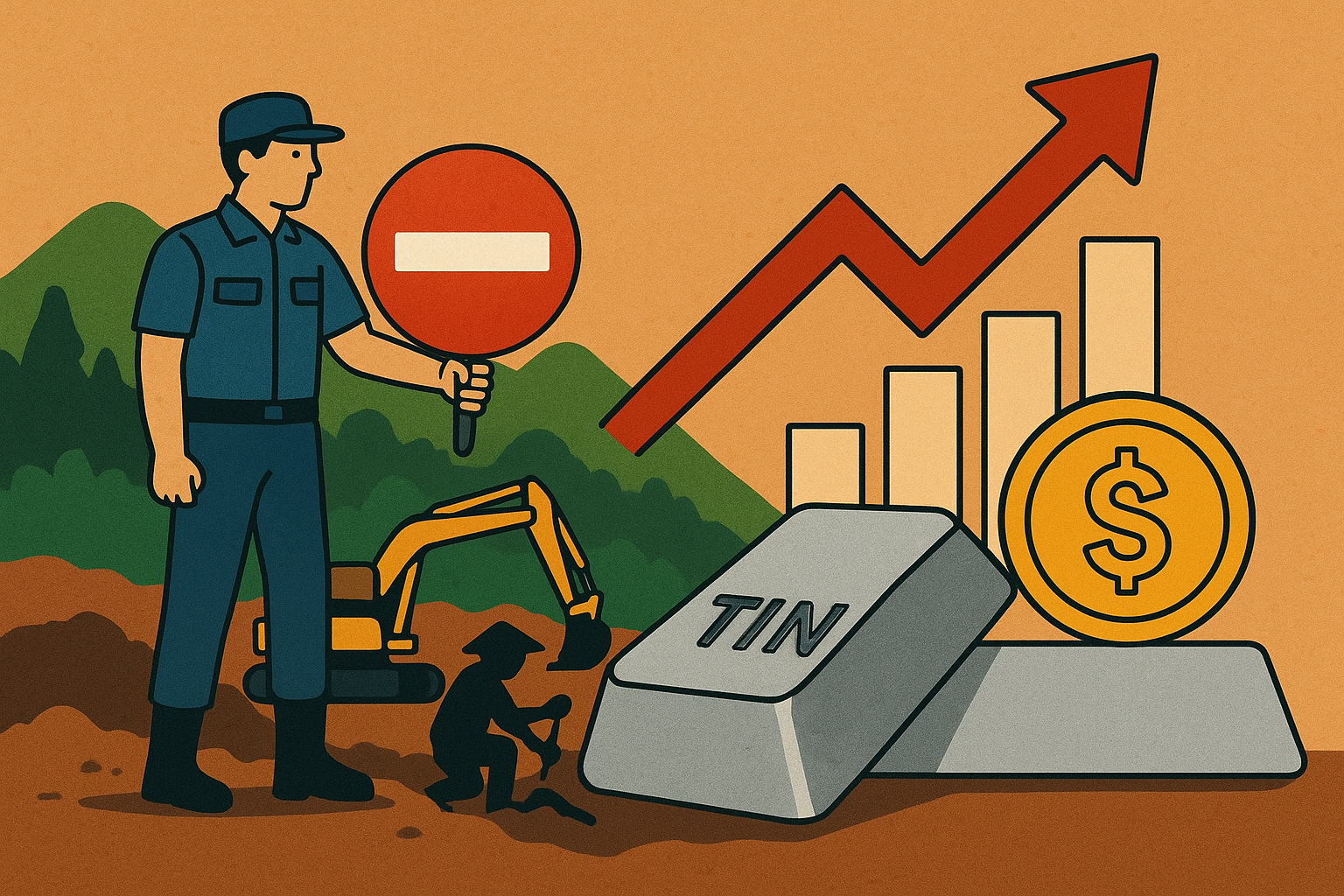Tin markets are back in the spotlight as Indonesia, the world’s second-largest producer, intensifies its crackdown on illegal mining operations in Bangka and Belitung. The enforcement action has triggered a surge in tin prices, with the London Metal Exchange (LME) benchmark crossing $37,500 per metric ton, the highest level since April 2025, according to Reuters.
This sudden price spike underscores how regulatory interventions in key commodity markets can rapidly reshape supply chains — with ripple effects across electronics, energy transition technologies, and broader industrial demand. For investors, the tightening supply story presents both risks and opportunities.
Why This Matters for Investors
Tin might not attract the same headlines as copper, lithium, or gold, but it is one of the most strategically important industrial metals. As the International Tin Association (ITA) has long highlighted, nearly 50% of global tin demand comes from its use in solder, essential for semiconductors, consumer electronics, and renewable energy infrastructure.
Indonesia has historically been a dominant supplier, accounting for roughly 20% of global tin production. However, a significant portion of output has come from unregulated or unauthorized mining. By clamping down on this activity, Jakarta is aiming to strengthen governance, reduce environmental damage, and capture more revenue from its resource base.
But for global markets, the near-term consequence is clear: reduced supply inflows at a time when demand is structurally strong.
Supply Shock Meets Structural Demand
The LME rally reflects not just immediate shortages but also mounting investor anxiety about the sustainability of supply chains. Unauthorized mining in Indonesia has played a critical role in filling the gap between regulated production and global consumption needs. Removing that volume tightens the market significantly.
According to Bloomberg Intelligence, tin inventories across major exchanges have already been trending lower in 2025, amplifying the impact of Indonesia’s crackdown. With prices now at multi-month highs, downstream industries from electronics manufacturers to solar panel producers could face margin pressures.
Meanwhile, substitute options are limited. Unlike other base metals, tin’s soldering properties make it extremely difficult to replace at scale, which means demand remains inelastic. This lack of flexibility suggests price volatility could persist well into 2026.
Future Trends to Watch
1. Southeast Asian Supply Risks
If Indonesia continues to tighten enforcement, global producers like Malaysia and Myanmar may see increased scrutiny as buyers seek alternative sources. Political and environmental pressures could create further bottlenecks.
2. Technology-Driven Demand
The global electronics and EV sectors are unlikely to slow down. With semiconductor demand forecast to grow at an annualized 8–10% through 2030 (McKinsey), tin’s role in soldering applications remains central to growth.
3. Investment Flows into Specialty Metals
Specialty and “future-facing” metals like tin, cobalt, and rare earths are seeing increased investor attention amid geopolitical tensions. Exchange-traded funds (ETFs) and mining equities with exposure to tin could benefit from inflows, particularly if prices sustain above $35,000/ton.
Key Investment Insight
For investors, this episode highlights the importance of monitoring regulatory and policy-driven supply shocks in metals markets. Companies with tin exposure — from major miners with Indonesian operations to electronics materials suppliers — could experience both short-term volatility and long-term pricing power.
Hedging strategies through futures and derivatives may be prudent for those managing exposure to raw materials. Meanwhile, investors with a long-term view may find opportunity in upstream producers positioned to supply regulated, sustainable tin, as ESG-conscious buyers increasingly seek transparent sources.
Stay Ahead with MoneyNews.Today
As commodities remain a critical driver of global market trends, the tin story is a reminder that regulatory actions can be just as market-moving as demand surges. Investors should closely monitor Indonesia’s next moves and the broader metals landscape.
For more daily insights into global markets, technology, and emerging industries, stay with MoneyNews.Today — your trusted source for actionable financial intelligence.





